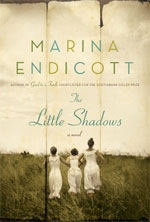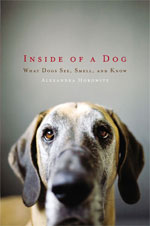
Writer Mark Lavorato sets several daunting challenges for himself with the ambitious Being Cedric. His title character Cedric Johnson, middle-aged insurance broker, variously estranged from family, friends and former associates, isn’t particularly sympathetic – which is fine and true to life and all, but then perhaps something else might be needed to draw readers in. There are other characters with which one can establish some interest or understanding, but none of those characters are involved and sustained throughout the story.
Then there’s the matter of Cedric’s rather unique problem: the readers is to believe he is having physical flashbacks to key moments in his past, going back as far as childhood. He can’t change the outcome of those events, but he can view and assess them in the moment with full knowledge of their impact and the presumed wisdom of age. Can this problem come to attain some symbolic heft, transcend gimmickry to achieve something more profound? Early on this strange journey, the reader might be piqued but not entirely certain.
So, Lavorato’s writerly dilemmas in turn create some considerable challenges for his readers. Those challenges freight the book with vaguely discordant notes well into the first several segments, each consisting of a few stanzas of poetry and two prose pieces set in different time frames. However, readers who persevere with this somewhat cumbersome structure and at times thorny novel/linked short stories hybrid will be rewarded with the book’s surprising emotional payoff.
Is it a spoiler of sorts to suggest that with each successive chapter or segment, it becomes increasingly likely that while he’s the title character, Cedric isn’t the protagonist? It’s an interpretation that does help to remove the distraction of Cedric and his predicament and get to the heart of some more interesting character studies, such as his third-grade teacher, a former landlady, a disgruntled ex-business partner, an emergency room physician and most poignantly, his estranged daughter. Those character studies, while uneven, offer some absorbing and satisfying moments in this book.
While they’re meant to be part of the connective tissue of the book, the poetry sequences in each chapter suffer from unwieldy structure and phrasing in places, not really deepening our understanding of the related prose sections. Interestingly, the most stirring poetry in the book isn’t in these sequences, but in a discussion about human connection and poetry towards the end of the book, which includes this soaring evocation:
“Poetry is being deaf to the extravagant choir that is behind you, below you, above you. But singing anyway. It is the collective and soundless cacophony of our solitary melodies, which is humming, even now, ringing in our ears with its almost perfect silence.”
Perhaps that’s the clue. Whether intentional or not, the awkward poetry sequences end up being a lovely illustration of what a spiritual panacea writing poetry can be. Writing poetry seems to have been comforting and clarifying for at least one of the characters brushed by Cedric in his earthly and unearthly travels. By the same token, whether intentional or not, the at best glancing connections from chapter to chapter are a form of mourning for connections lost or never really made. It makes it worth forging to the end of this uneven but intriguing and at times touching book.
Thank you to Brindle & Glass and the author for providing a review copy of Believing Cedric, by Mark Lavorato.




